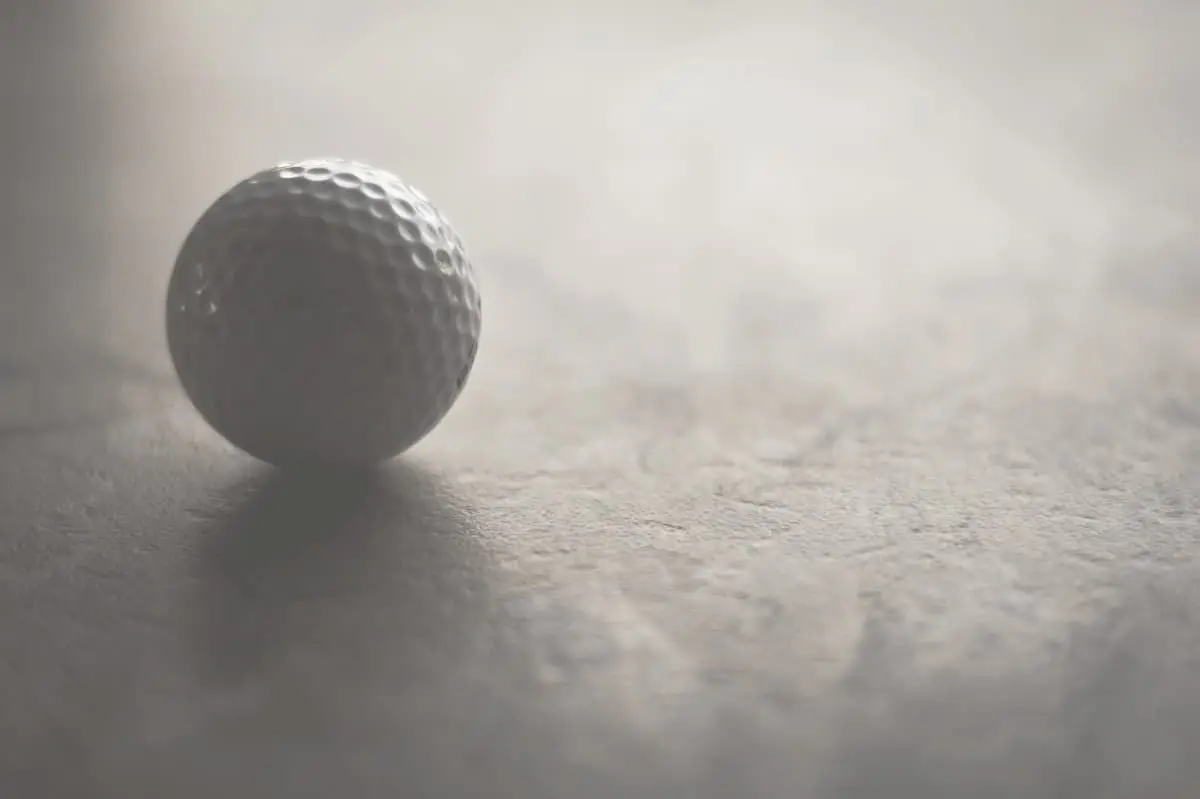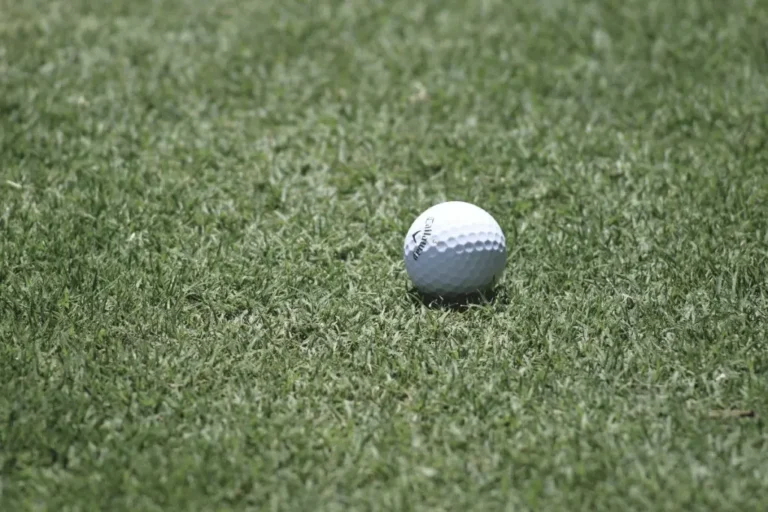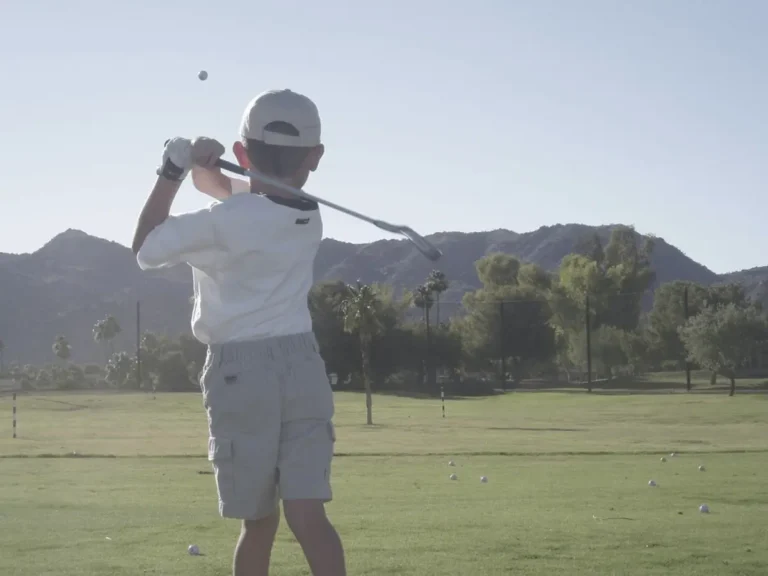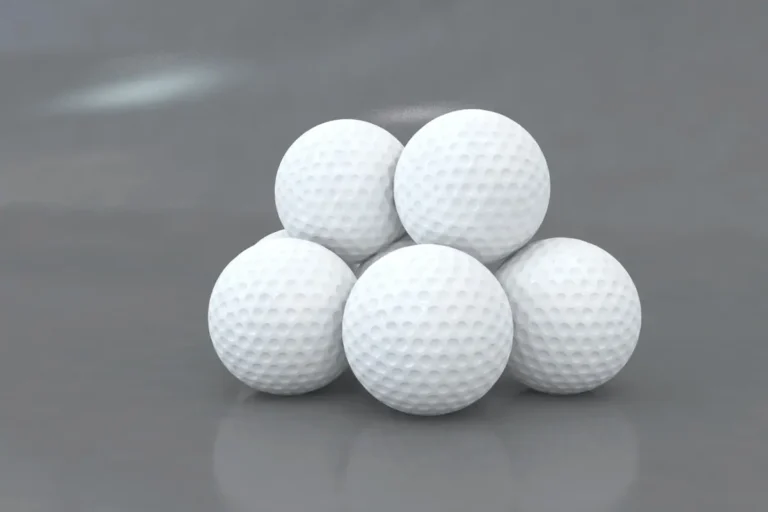explore the Best Low Compression Golf Balls – top five models!
Along with your strike’s precision, how far your ball travels is a key part of golf. The best low compression golf balls are designed to help you aim better and reach further. Here, we cover everything you need to know about low compression models.
Plus, to make your selection process smoother, we’ve also reviewed some of the best low compression golf balls:
- Callaway Golf Supersoft Golf Balls
- Titleist AVX Golf Balls
- Srixon Soft Feel Golf Balls
- Callaway Supersoft Golf Balls
- Vice GOLF Pro Soft Golf Balls
What Is a Low Compression Golf Ball?
The term compression defines how hard or soft a golf ball is and how much it deforms when struck.
When holding a low compression ball, it generally feels softer. Indeed, the inner-threads are looser, lowering its density. As you’re striking, the ball compresses, releasing the stored energy to fly faster and further.
As a result, a soft ball requires less swinging power than a hard ball to travel the same distance.
Who Uses Low Compression Golf Balls?
Although any golfer can play with this type of ball, the most frequent users are:
- Seniors and slow-swing players
- Novice golfers
- Experienced golfers
Seniors and Slow-Swing Players
To hit a hard golf ball at high speed, you need to swing fast. For seniors and anyone suffering from back or shoulder injuries, this isn’t always easy to achieve.
As we age, we tend to lose flexibility, impacting the motion’s quality and pace. The best low compression golf balls for seniors can help counterbalance slower swing speeds.
Novice Golfers
Yearly, about 2.5 million Americans pick up their clubs for the first time. Beginners tend to focus on technique and precision while trying to hit the ball. Starting with a low compression model can ease their introduction to the sport.
Besides the added velocity, these balls generally spin more. This increased swirl allows them to go higher, giving golfers better control over both the trajectory and stopping point.
Experienced Golfers
Finally, experienced golfers also enjoy these models. The added speed and spin make them ideal when practicing various strikes and techniques. They also provide a difference on the green and when putting.
Measuring Compression Levels
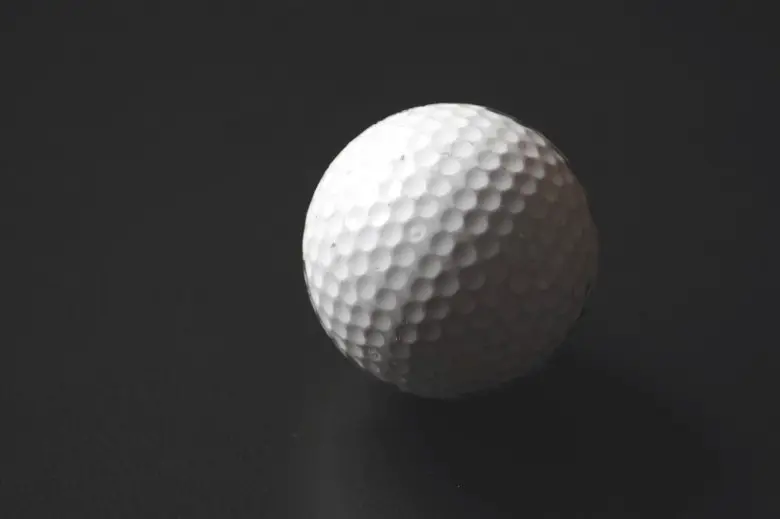
Reading and comparing compression ratings can be confusing if it’s your first time buying low compression golf balls. The info below should help sort the facts and the figures.
What Are Compression Ratings?
Golf balls’ compression ratings are indicated by a figure ranging from 0 to 200. Simply put, the score measures the softness of the ball. The lower the number, the softer the ball.
Although there isn’t a perfect rating matching all needs, a low compression golf ball typically comes with a classification of 75 or lower.
Are Compression Ratings Outdated?
The lack of an industry-standard rating makes it difficult to compare products against each other. First, most manufacturers use different criteria to judge compression. In addition, modern materials and technologies include many new variables, making the evaluation potentially unreliable.
As a result, you’ll notice many brands don’t display a compression rating. For beginners, however, it’s a useful point of reference.
Choosing the Best Low Compression Golf Ball
There are a few things to consider before you buy low compression golf balls. Let’s take a look at the key factors now.
Construction Type
Golf balls are made of several layers. Two-piece and three-piece are most common but there are other types. Each has different qualities.
Two-Piece Balls
Low compression golf balls are usually two-piece models to allow extended distance with a slower stroke. They come with excellent longevity and are often more economical than multi-layered models.
Three-Piece Balls
Three-piece golf balls offer better command over the ball. But you might sacrifice some distance in return. That said, if you’ve got the experience and want some added spin, three-pieces are a great choice.
Cover Materials
Cover material also impacts on a ball’s performance. The outer coating is typically made of one of two materials: urethane and Surlyn (ionomer).
Urethane Covers
Balls with urethane covers are at the higher end of the low compression options. When it comes to golfing, urethane allows refinements over your stopping distance. Although they come at a higher price point, urethane coated balls are incredibly durable and usually worth the investment.
Ionomer Covers
These golf balls generally firmer than urethane options but they typically have a shorter lifetime. For you, this translates to better value initially. If you’re just getting started and lose a fair number of balls, ionomer might be a good choice.
You’ll come across a cover material named Surlyn. It’s a common ionomer material made by DuPont.
Color Matter
Color may be more important than you think. Because low compression models travel well, you might lose track of them during their flight. Selecting a bright color also makes finding lost balls a lot easier!
Professional Competitions
Finally, if you’re experienced enough to be competing, ensure that you can use your new low compression golf balls during championships. They should be approved by the United States Golf Association (USGA) or The Royal and Ancient Golf Club of St Andrews (R&A).
The Best Low Compression Golf Balls
After a thorough evaluation, we selected and reviewed the top five low compression models:
1. Callaway Golf Supersoft Golf Balls

This two-piece golf ball features an ionomer cover providing good durability. It’s also the brand’s softest model available and designed to increase accuracy and speed.
Users report that Callaway’s Supersofts are great with short irons and when chipping and pitching. You might even get a straighter flight as golfers praise the ball for this quality.
The green matte finish gives the ball a stylish yet elegant look. You can also choose classic white. Or pick a shade visible from afar; Supersofts come in hi-vis yellow, red, pink, and orange.
This 2019 version boasts HEX Aerodynamics technology to strike higher and further. The box contains 12 balls, each designed with a line around the circumference to help golfers aim. Beginners should appreciate that extra help.
Pros:
- Available in six colors for optimum visibility on the course
- Two-piece ionomer cover
- Assists with shooting straighter and higher
- New HEX Aerodynamics technology
- User-friendly
Cons:
- Some users wished they felt softer
2. Titleist AVX Golf Balls

If you’re looking for a premium product, this low compression golf ball is one to consider. It’s designed with distance and pace as priorities and features a soft feel.
All low compression balls have the potential to expand your reach. Some Titleist owners even report an impressive 10 percent distance increase using this model—a noteworthy improvement!
A thin, high-quality layer of urethane material covers the ball. It also includes an aerodynamic, 352-dimple design for high speeds and a low (but precise) trajectory.
The package includes 12 white balls, but the AVX is also available in yellow.
Pros:
- Available in two colors
- Durable, high-end urethane cover
- Aerodynamically designed for long-distance shots
- Designed for straight and low trajectory
- Renowned manufacturer with 90 years experience
Cons:
- The price point might be too high for casual golfers
3. Srixon Soft Feel Golf Balls

This award-winning product contains 12, two-piece balls. The dual-layer design is perfect for straight and long shots. Complementing it is the cover with 338 dimples, cleverly designed to boost speed, even on windy days.
For optimum speed, the balls contain a soft center with tighter material around the edge. While the outer layer is very thin at just 0.063 inches, the ionomer cover should resist tough landings.
At a 60 compression rating, these balls should be forgiving to even the slowest swingers. Lastly, they conform to USGA requirements. If needed, you can use them during championships.
Pros:
- Users appreciate the great value
- Available in yellow or white
- Meet USGA requirements
- Ergonomic design
- Compression rating of 60
- Sturdy two-piece balls with ionomer covers
Cons:
- Less durable than expected, some chipped after 13 holes
4. Callaway Supersoft Golf Balls (Previous Generation)

These are the earlier generation version of the Callaway balls we reviewed beforehand. Although they don’t come with the new HEX Aerodynamics technology, owners love their overall performance.
The cover is made of Surlyn for durability. As for the ball itself, users report good, true long shots on a consistent basis. No wonder Callaway keeps selling this product!
With a compression rating of just 35, this is one of the lowest compression golf balls available. For that reason, we think it’s probably the best golf ball for seniors.
Pros:
- Cover made of strong Surlyn ionomer
- Aimed to cover long distances
- Pink color provides great visibility
- Users appreciate the extra soft feeling
- Very low compression rating of 35
Cons:
- Only available in pink or white
- Some users find the spin level lacking
5. Vice GOLF Pro Soft Golf Balls

If you’re looking for low compression golf balls for professional competitions, this product should grab your interest. Vice Pro balls conform to both USGA and R&A requirements.
This product combines longevity and performance. First, as a three-piece model, you should have greater control over the ball. Also, the 336-dimple design facilitates straight trajectories and optimized distance off the tee.
As for the cover, the manufacturer has used a strong urethane layer. Along with S2TG technology, this contributes to an efficient spin rate and reliable durability.
We like the flashy and modern look. The neon lime and matte finish should be seen from far. On top of that, the BJ13 coating is UV resistant and anti-glare, perfect when golfing in the summertime!
Pros:
- Conforms to USGA and R&A requirements
- Three-piece balls
- Available in white, red or neon lime
- UV resistant and anti-glare urethane cover
- 336-dimple design
Cons:
- Users aren’t fond of the matte finish as the balls get dirty quicker.
Conclusion
Now that you know what to look for, choosing the best low compression golf ball shouldn’t be difficult. Whether you’re a beginner, an experienced golfer, or are dealing with a slow swing, you’ll find a model that suits your needs.
Our favorite product remains the Callaway Golf Supersoft Golf Balls. It comes with in-depth technology and design and a sturdy ionomer cover. All in, it’s an efficient and durable golf ball. On top of that, the bright colors make this model convenient and fun on the course.
Whichever ball you decide on, note that outside elements can come into play and impact a ball’s performance. Cold weather, for instance, tends to increase a ball’s density.

